
Aug '05 - Jan '11
Okay, so I was the gallery assistant last year. This year I was offered the opportunity to expand my responsibilities in the gallery, including marketing, promotion, communications, hospitality, grant writing, new initiatives, and curating (under the supervision of a highly-respected, professional panel) -- basically managing the gallery series. I was given this chance based on my experience as a film curator and as a former director of a non-profit organization... I provided samples of my work as a curator and wrote a lengthy proposal, including my short and longterm goals for the gallery series. 
I'm excited that the administration has given me this opportunity, and to me it means that they value the experiences of their graduate students and are willing to foster a creative, professional environment for the graduate students. It sounds like a fairly simple and obvious concept, but having seen the inner workings of 3 universities now, I know how easy it is for the simplest of maneuvers to be tied up with red tape.
So anyway, I've been working pretty hard this summer to earn my keep, getting things straight in the gallery, getting ready for the new season. In addition to developing shows, addressing immediate security concerns, technology needs, and applying for an operating support grant, I've created an archive of the gallery's past shows and developed a series of onesheets to send to prospective exhibitors. Eventually these will be up alongside our archive on the new website, which is currently under development. I'm going to post the photos and text from the onesheets here, since they pretty much sum up last season. Let me warn you now, it'll be a long post. I'll skip the Ken Smith show, since you've already seen it.
Next up, I'll post a few tidbits of confirmed info and a few rumors on what's coming up at KSA next year.
----
Gerald Zugmann:
4 Austrian Architects
August 1 - October 21, 2005
Installation by Ivan Vukcevich
In cooperation with the Austrian Consul General, the Knowlton Banvard Gallery is happy to present a selection of works from architectural photographer Gerald Zugmann. The show consists of primarily gelatin silver prints or giclée prints on paper, focusing on the architectural works of Hollein, Domenig, Kappeler, and Coop Himmelblau.
For Gerald Zugmann, photography is an autonomous artistic medium; and in order to make his artistic statement, he makes use of architecture in particular. For him, it is not a matter of producing documentary representations of built objects. Much more, he seems to shape architecture itself.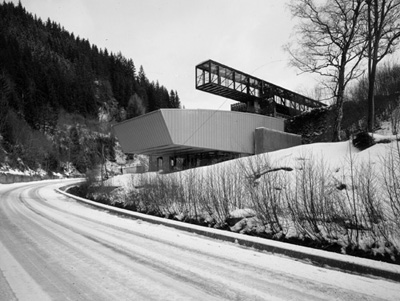
The form of a building, which Zugmann has made reproductions of, no longer appears as merely that which the architect has bestowed upon it - it has become the form, which the viewer has bestowed upon the building. Zugmann's very conscious selection of built objects and thus, their architects, allows him to form “his” architecture. In this way, he qualifies the individuality of each architect, so that the built object and its essential statement as interpreted by him remains in the foreground.
Carl Pruscha,
Professor at the Academy of Fine Arts, Vienna
----
Franco Albini:
Museums and Installations
February 27 - March 17, 2006
Curated by Federico Bucci & Augusto Rossari,
Department of Architecture, Milan Polytechnic
Models by Evan Chakroff, Hristina Panovska, Michael Fairchild, Christie Mills, Ashley Middelberg, Christopher Gruette, Marc Syp, Ken Kremer, Linda Pak, Kristi Gerard, Jason Robinson, Maria Kostakos, Patrik Matthews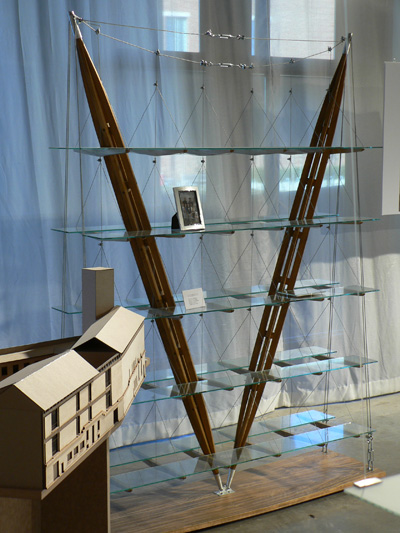
The exhibition of select work from 1930-1977 by Italian architect Franco Albini and his collaborators surveys their “neo-rationalist” alternative to high modernism. Though Albini first came to international attention for his furniture design, by the 1950s he had produced some of Italy's most influential works of architecture. The sensitivity to context, materiality, and history of the buildings transformed the very idea of modernism and helped set the stage for a more complex account of modernity throughout Europe.
Presented with Symposium:
Modernity and Tradition
March 3, 1-4pm
With panelists Marco Albini, David Florman, David Horn, Amy Schuman, Stephen Leet, Brian McHale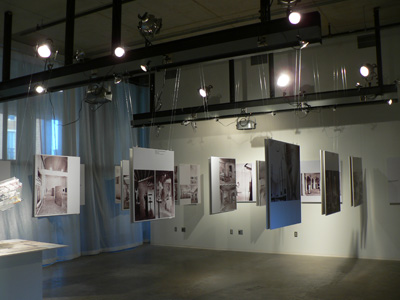
While contemporary thought retains an allegiance to early modern attitudes about progress, productivity, abstraction, and experimentation, it is critical of modernist developments such as global production and the placelessness and destitution of cultural differences that such developments entail. With the work of Albini as its provocation, the symposium revisits the problem of “being modern” in light of the complex forces that shape an ever-changing notion of modernity with an open discussion on the dilemmas inherent in our current state of affairs.
----
Alisa Andrasek: Biothing
March 27 - May 12, 2006
Installation by Alisa Andrasek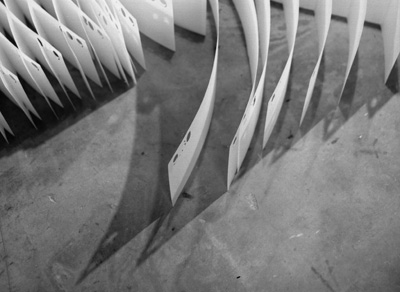
Biothing is a research-design laboratory directed by Alisa Andrasek, an experimental practitioner of architecture. Founded in 2001, Biothing's research focuses on the generative potential of physical and artificial computational systems for design. Biothing attempts to engage with complexity through an algorithmic articulation of the relation between the corporeal and incorporeal. In their work, design is understood as genetic inscription.
Biothing's projects range from fashion accessories and product design to large-scale structural and urban fields. They have published work in a number of journals, including the AD issues on Digital Tectonics, edited by David Turnbull; Designing for a Digital World, edited by Neil Leach; a forthcoming AD issue on Network Practice; and an upcoming MIT publication on Non-Standard Praxis. Recent and forthcoming exhibitions of Biothing's work include the 2003 Prague Biennale, the 2004 Sydney Biennial, Architectural Biennial Beijing, MOMA PS1, and the Museum of Contemporary Art in Trento, Italy (MART).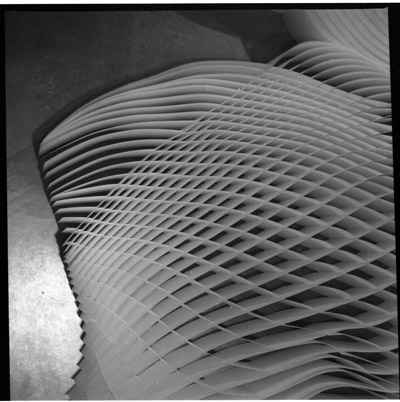
Andrasek graduated from the University of Zagreb School of Architecture and holds a Masters in Advanced Architectural Design from Columbia University. She has taught architecture studios and theory seminars at Columbia University, the University of Pennsylvania, Rensselaer Polytechnic Institute and Pratt Institute. For more information on Biothing, visit http://www.biothing.org/
----
Andrew Kudless: cell
May 8 - May 26, 2006
Installation by Andrew Kudless, LeFevre Fellow ”˜05-'06
Fabrication Specialist, Assistant Designer: Ivan Vukcevich
A/V Design & Programming: Ronnie Parsons, Brandon Zeeb
The work shown in this exhibition is a selection of the research projects explored by the architectural design studio materialsystems.org over the last two years. Founded by Andrew Kudless, the studio investigates the emergent relationships between architecture, engineering, biology, and computation. The studio develops methodologies of performative integration through geometric and material differentiation. The studio's work ranges from speculative and built work to the crafting of new tools to facilitate an interdisciplinary approach to the design and fabrication of architecture.
The exhibition is comprised of three main bodies of research: cellular aggregate structures, prefabricated cladding modules using flexible formworks, and interactive installation technologies. 
Kudless' work explores digital currents in contemporary architectural practice but retains, unabashedly, a quality of the sensual and an expression of the “hand of man.” The algorithmic basis of the p_wall gives way to the materiality of the plaster, resulting in a form more like an abstraction of the human body than the crystalline field that we have come to expect from algorithmic architecture. 
This conscious mediation of the mathematical and the sensual separates Kudless' work from many of his contemporaries. This sensibility of sensory immersion also informs the installation's interactive soundscape that was developed with Ronnie Parsons and Brandon Zeeb. The video-controlled feedback loop contributes to the show's immersive experience, engaging a multitude of senses and encouraging the viewer's awareness of his or her own potential in the creation of architectural space.



1 Comment
I love biothing!
Block this user
Are you sure you want to block this user and hide all related comments throughout the site?
Archinect
This is your first comment on Archinect. Your comment will be visible once approved.